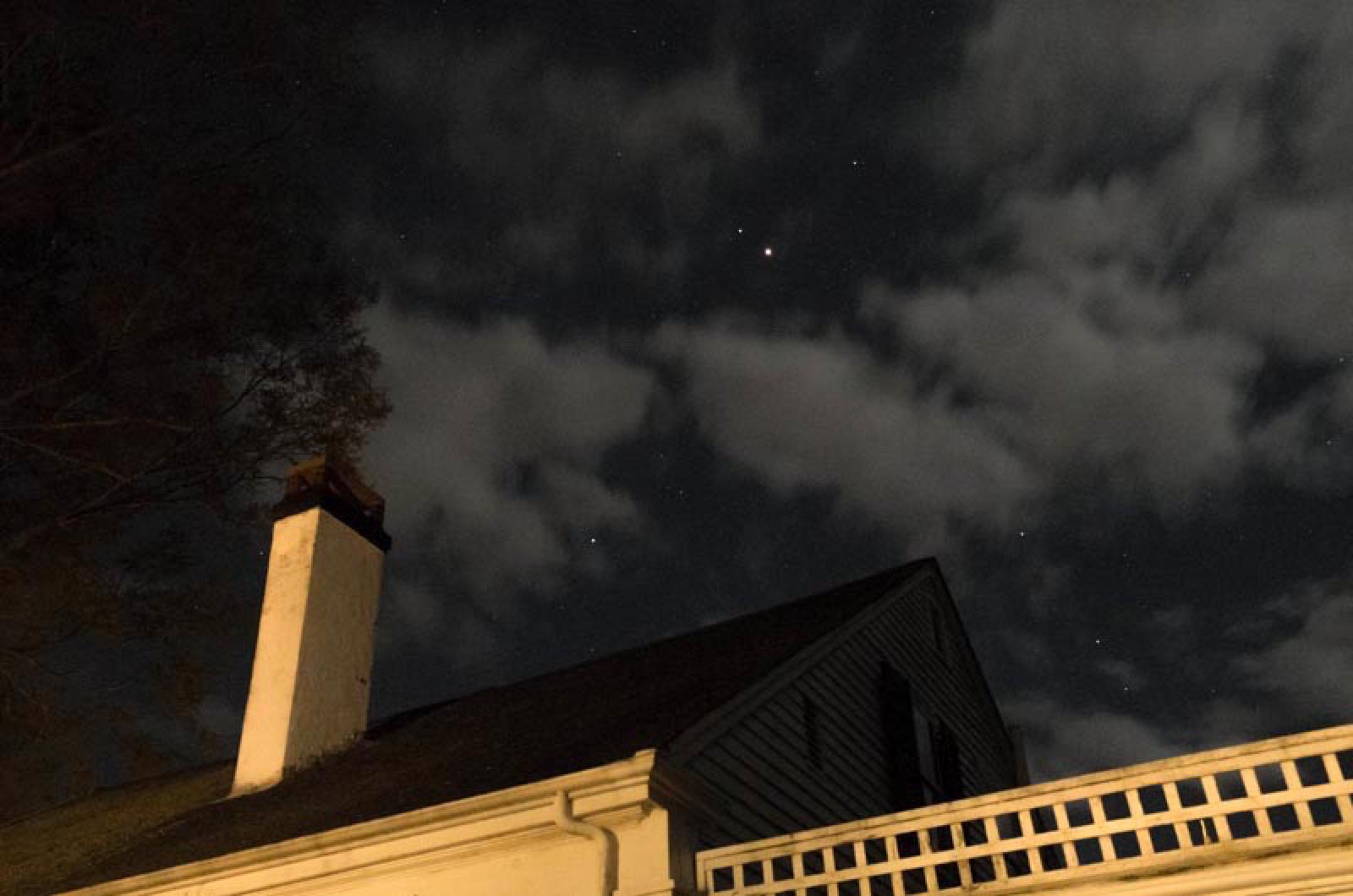December shows much planetary promise.
Throughout the month, Mercury, Venus, Mars, Neptune and Jupiter can be seen on various days and at different locations across the sky, though it is Mars that is capturing my attention. Find it in the southwest after sunset, though it might have been be eclipsed by the Geminid meteor showers that occurred earlier in the week.
The planet also captivated John Updike who explained, “Mars has long exerted a pull on the human imagination. The erratically moving red star in the sky was seen as sinister or violent by the ancients: The Greeks identified it with Ares, the god of war; the Babylonians named it after Nergal, god of the underworld. To the ancient Chinese, it was Ying-huo, the fire planet.”
Perhaps it is its powerful red color that helps it maintain a place in our hearts. Red has long been symbolic of anger, danger, adventure, and passion, and suggests both blood and fire.
Mars is the fourth planet from the sun and the second smallest after Mercury. It is about 1/5th the diameter of the Earth. Though no liquid water is regularly found on its surface, it does have polar ice caps, making it the only other planet besides Earth to have them. Subsurface water provides the intriguing possibility that life could exist, or could have existed, on the Red Planet — so called due to the iron oxides that give its surface a scarlet hue.
Its topography is notable, and would be both familiar and wild to human visitors. Immense areas of familiar rocky and sandy terrain cover a great deal of the surface, to be sure, but then there are the dramatic features: one of the biggest canyons (Valles Marineris) and the largest and second highest volcano in our solar system (Olympus Mons) are found on this planet. For comparison’s sake, Olympus Mons is three times the height of Mount Everest!
Two moons, Phobos and Deimos, circle Mars, although theories suggest these objects might have been asteroids captured by the planet’s gravity. And there is speculation that they may someday crash into the planet’s surface or break up around it in orbit. The moons’ names, meaning “fear” and “terror (or dread),” respectively, are evocative of the planet’s association with the dark side.
Humans have long been intrigued by the possibility of life on Mars. There is great interest, as the planet is considered the most likely (other than ours) to be able to support life. Since 1960, more than 30 missions to Mars have been undertaken by the Soviet Union and the United States. The United Arab Emirates also want to get into the exploration game and has plans for a mission over the next 10 years.
The real race is to put humans on Mars. Other countries and individuals have pie-in-the-sky ideas to be the first (or just most successful colonizers) of this planet. A reality show is even in the works to document and publicize the mission. Private entrepreneurs are also getting into the act, making plans and making fun. Tesla CEO Elon Musk famously suggested that he “would like to die on Mars. Just not on impact.”
But, it was the late John Glenn who understood most deeply, “We’re not up there in space just to joyride around. We’re up there to do things that are of value to everybody right here on Earth.” It’s a sentiment that can be said to apply to all us Earth-bound folk, too.
Suzan Bellincampi is director of the Felix Neck Wildlife Sanctuary in Edgartown, and author of Martha’s Vineyard: A Field Guide to Island Nature.







Comments
Comment policy »